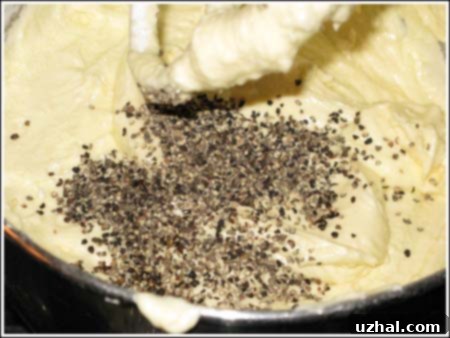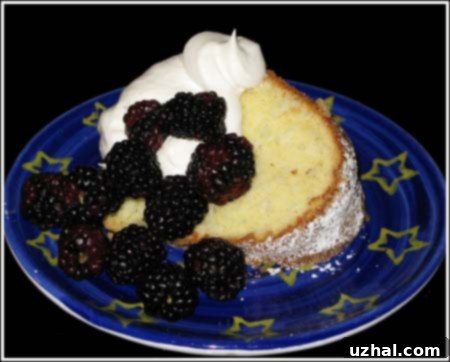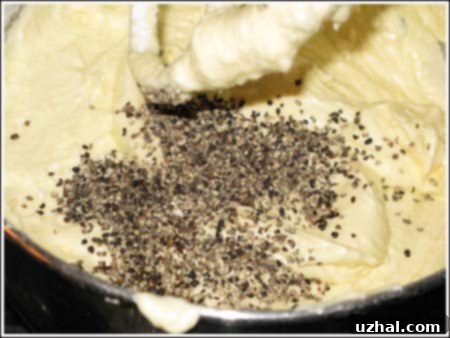Black Pepper Bundt Cake: A Surprisingly Delicious Vintage Recipe Adventure
As an avid home baker, I often find myself drawn to culinary experiments, but not every suggestion sparks immediate enthusiasm. “I’ll try anything once,” might be a common mantra, yet in the realm of baking, my curiosity has its limits. However, when the idea of a Black Pepper Bundt Cake surfaced, it struck a chord of genuine intrigue. Could this seemingly unusual combination truly work? The concept alone felt like an invitation to a unique taste adventure, promising a departure from the ordinary.
What truly piqued my interest was the historical whisper surrounding this recipe. I had stumbled upon an account detailing this very cake as a first-prize winner at the West Texas State Fair in Abilene, dating back to the early 1900s. The thought of a dessert from that era, featuring black pepper as a star ingredient, immediately raised questions. What culinary trends defined that period? And more importantly, what happened to them? Was there a “better” spice that eventually replaced pepper in sweet treats, perhaps mace or nutmeg? And did bakers in the early 20th century even have access to specialized ingredients like lemon extract?
According to Taste of Home, this particular rendition was lovingly recreated by a reader aiming to revive an authentic early 1900s recipe. This fascinating backstory added another layer of appeal, transforming the cake from a mere novelty into a delicious piece of edible history. The challenge was clear: I simply had to bake and taste this Black Pepper Bundt Cake for myself to unravel its secrets and understand its enduring charm.

Exploring the Historical Allure of Spiced Desserts
The notion of black pepper in a sweet cake might seem unconventional by today’s standards, but historically, spices played a far more versatile role in both savory and sweet dishes. During various periods, exotic spices like cinnamon, cloves, nutmeg, and yes, even black pepper, were highly prized and often used to add depth and warmth to desserts. Before the widespread availability of vanilla and specific extracts, spices were essential for elevating the flavor profile of baked goods, making them a luxurious and celebrated treat.
Consider traditional gingerbread, rich fruitcakes, or even spiced apple pies – these recipes are testaments to the enduring appeal of spices in sweets. Black pepper, with its pungent, warm, and slightly floral notes, offers a unique counterpoint to sweetness, creating a complex and sophisticated palate experience. Its inclusion in a prize-winning cake from over a century ago highlights a culinary adventurousness that we might do well to rediscover today. This historical context provides a deeper appreciation for the Black Pepper Bundt Cake, moving it beyond a simple novelty to a genuine piece of culinary heritage and a testament to timeless flavor combinations.
My Baking Experience: Recipe Notes and Flavor Observations
Given the rather unusual nature of this recipe, I made a conscious decision to adhere strictly to the original instructions. My aim was to experience the cake as it was intended, resisting any urge to tweak or “improve” it on the first go. This meticulous approach allowed me to truly assess the historical integrity and the unique flavor profile that presumably charmed judges at the West Texas State Fair many decades ago.
One specific detail that caught my eye was the omission of salt in the ingredient list, coupled with the specification of “butter” rather than “unsalted butter.” In baking, the distinction is crucial. When a recipe simply calls for “butter,” it often implies salted butter, especially in older recipes where unsalted varieties were less common or explicitly specified. Following this intuition, I opted for regular salted butter and refrained from adding any extra salt to the batter. After tasting the finished cake, I did feel that a tiny dash of additional salt could have further elevated the flavors, perhaps by brightening the lemon and taming the pepper’s warmth ever so subtly. Salt, in baking, is not just about making things “salty”; it’s a powerful flavor enhancer, capable of bringing out the best in other ingredients and balancing sweetness.
Despite this minor observation regarding salt, the cake was undeniably delicious. The black pepper, far from being an oddity, imparted a significant and welcome warmth, a delightful counterpoint to the sweetness of the cake. It wasn’t an overwhelming heat, but rather a comforting, lingering warmth that danced on the palate and invited another bite. The pepper worked surprisingly well with the lemon extract, which provided a mild, almost understated citrus note. It wasn’t the bright, zesty punch of fresh lemon, but a softer, more subtle hint that allowed the pepper to shine without being overshadowed. This delicate balance of warming spice and gentle citrus is truly what makes this Black Pepper Bundt Cake a unique and memorable dessert, proving that sometimes the most unexpected combinations yield the most delightful results.

The Prize-Winning Black Pepper Bundt Cake Recipe
Ready to embark on your own vintage baking adventure? Here’s the recipe for this extraordinary Black Pepper Bundt Cake. Precision in baking is key, so pay close attention to measurements and temperatures to achieve the best results and taste a piece of culinary history.
Ingredients:
- 230 grams (2 sticks or 1 cup) salted butter, softened: Essential for a rich flavor and tender crumb. Ensure it’s at room temperature for optimal creaming, which incorporates air for a lighter texture.
- 580 grams (3 cups) granulated sugar: Provides sweetness, moisture, and helps create a fine, tender crumb structure in the cake.
- 1 tablespoon coarsely ground black pepper: The star ingredient! Use freshly ground pepper for the most vibrant flavor and warming notes. The coarse grind offers a pleasant textural element.
- 2 teaspoons lemon extract: Offers a subtle, mild citrus note that complements the pepper without overpowering it.
- 300 grams (6 large) eggs, room temperature: Crucial for structure, binding, and moisture. Room temperature eggs emulsify better with the butter and sugar mixture, leading to a smoother batter.
- 380 grams (3 cups All-Purpose flour or 3 ¼ cups White Lily brand) all-purpose flour: Provides the foundational structure of the cake. If using a lower-protein flour like White Lily, a slightly higher volume is recommended due to its lighter nature.
- 230 grams (1 cup) heavy whipping cream, at room temperature: Adds significant richness and moisture, contributing to the cake’s luxurious texture. Room temperature cream combines smoothly with the batter.
- Powdered Sugar for dusting (optional): For a classic, elegant finish and a touch of extra sweetness upon serving.
Instructions:
- Prepare Your Pan and Oven: Begin by preheating your oven to 325 degrees F (160 degrees C). Thoroughly prepare a 12-cup Bundt pan by generously spraying it with a flour-added cooking spray (such as Baker’s Joy) or by greasing it with butter and dusting it with flour. Ensure all the intricate curves and crevices of the Bundt pan are well-coated to prevent sticking and ensure a clean release.
- Cream Butter and Sugar: In a large mixing bowl, ideally using a stand mixer fitted with the paddle attachment, combine the softened salted butter and granulated sugar. Beat on medium speed for approximately 3 minutes, or until the mixture becomes very light, pale, and fluffy. This vital step incorporates air, which is fundamental for developing the cake’s tender and airy texture.
- Add Flavorings: Reduce the mixer speed to low, then carefully add the coarsely ground black pepper and lemon extract. Mix gently until these flavorings are just combined into the butter-sugar mixture.
- Incorporate Eggs: Add the large eggs one at a time, beating very well after each addition. It’s crucial to ensure each egg is fully incorporated into the batter before adding the next. This prevents the mixture from curdling and helps maintain a smooth, homogeneous batter.
- Alternate Dry and Wet: With the mixer on its lowest speed, or by hand using a sturdy rubber spatula, begin adding the all-purpose flour alternately with the heavy whipping cream. Always start and end with flour. Add about one-third of the flour, mix until just combined, then add half of the cream, mix, then another third of flour, the remaining cream, and finally the last third of flour. Mix only until just combined; take care to avoid overmixing, which can overdevelop gluten and result in a tough, dry cake.
- Pour and Bake: Carefully pour the prepared batter evenly into your thoroughly greased and floured Bundt pan. Place the pan in the preheated oven and bake for 70-75 minutes, or until a wooden toothpick or cake tester inserted near the center of the cake comes out clean. Keep in mind that baking times can vary slightly depending on your oven, so monitor your cake’s progress.
- Cooling Process: Once baked, remove the Bundt pan from the oven and allow the cake to cool in the pan for exactly 10 minutes. This crucial resting period allows the cake’s structure to firm up slightly, making it much easier to invert and remove without damaging its beautiful shape.
- Final Cooling: After 10 minutes, carefully invert the Bundt cake onto a wire rack to cool completely. Cooling on a wire rack ensures air circulation around the entire cake, preventing the bottom from becoming soggy due to trapped steam.
- Serve: Once the cake is completely cool to the touch, dust generously with confectioners’ sugar (powdered sugar) if desired. This provides a beautiful, classic presentation.
Yield: This generous recipe typically yields 16 substantial servings, making it perfect for family gatherings, entertaining guests, or simply enjoying over several delightful days.
Tips for Achieving the Perfect Black Pepper Bundt Cake
- Freshly Ground Pepper: For the most vibrant and aromatic flavor, always use freshly coarsely ground black pepper. Pre-ground pepper can quickly lose its potency and complexity.
- Room Temperature Ingredients: Ensure all cold ingredients like butter, eggs, and heavy cream are at room temperature. This is vital for proper emulsification, leading to a smoother, more uniform batter and ultimately a better-textured, more consistent cake.
- Do Not Overmix: Once the flour is introduced to the batter, mix only until the ingredients are just combined. Overmixing develops gluten, which can result in a dry, dense, and tough cake rather than a tender one.
- Accurate Measurements: Baking is often referred to as a science. For the most consistent and accurate results, particularly with dry ingredients like flour and sugar, consider using a kitchen scale.
- Pan Preparation is Key: A meticulously greased and floured Bundt pan is absolutely critical to ensure your cake releases cleanly and retains its intricate design. Do not rush or skimp on this essential step!
- Oven Calibration: Ovens can vary significantly in temperature accuracy. If your oven tends to run hot or cold, adjust the baking time and temperature accordingly. An inexpensive oven thermometer can be a valuable tool for consistent baking.
Serving Suggestions and Creative Variations
While delicious on its own, a simple dusting of powdered sugar adds a touch of rustic elegance to the Black Pepper Bundt Cake. For those who enjoy a bit more flair, consider drizzling a light lemon glaze over the cooled cake. This can be made easily with powdered sugar and a touch of fresh lemon juice or milk, further enhancing the subtle citrus notes present in the cake. Alternatively, a delicate cream cheese frosting could also complement the spice beautifully, adding a creamy texture.
For an even more adventurous twist on this unique dessert, a tiny pinch of finely ground ginger or cardamom could be added alongside the black pepper to deepen and expand the spice profile, creating an even more complex flavor experience. This cake pairs wonderfully with a warm cup of coffee or a comforting mug of hot tea. For a delightful contrast, a slice might even be exceptional when served with a scoop of premium vanilla bean ice cream or a dollop of freshly whipped cream, especially if you wish to gently temper the pepper’s warmth and add a creamy richness.
Conclusion: Embrace the Unexpected!
The journey with the Black Pepper Bundt Cake was truly an enlightening and delicious one. What began with a healthy dose of skepticism about the combination of pepper and cake evolved into a genuine appreciation for a unique and surprisingly delicious dessert. It’s a delightful testament to the fact that some of the most memorable culinary experiences often come from venturing beyond the familiar and embracing unconventional ideas. This cake not only offers a delightful balance of sweet, warm, and subtle citrus flavors but also serves as a fascinating, edible link to the inventive kitchens of the past. I wholeheartedly encourage you to step outside your comfort zone and give this West Texas State Fair winner a try. You might just discover your new favorite vintage indulgence, and a unique talking point for your next dinner party!
Discover More Unique Cake Recipes and Culinary Adventures:
- Dr Pepper Cupcakes With Caramel Cream Filling
- Dr Pepper Chocolate Layer Cake
- Favorite Black and White Cookies
- Black Bottom Cupcakes
- Old Fashioned Black Walnut Pound Cake
